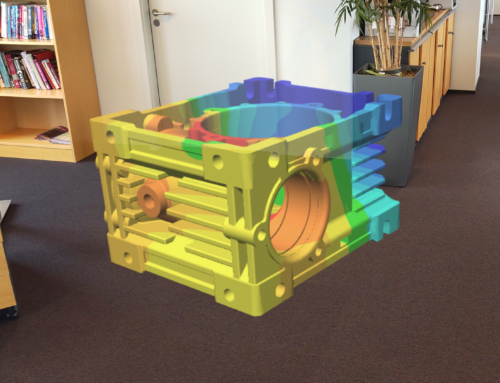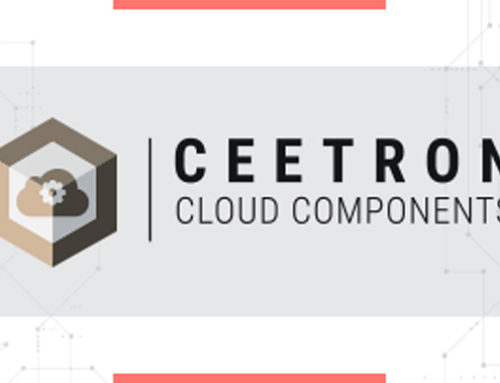(22.10.2019) Together with Tor Helge Hansen, Ceetron’s CEO and Frode Brandt, Senior Software Developer, I have just spent some days with Dr.-Ing. Günter Müller and his colleagues in CADFEM, as participants at the 37th CADFEM ANSYS Simulation Conference. The event took place in Kongress Palais in Kassel, Germany on October 16-17.
Key facts about the event: 800 attendees, 38 exhibitors, 3 parallel tracks, around 75-100 presentations, key notes by Dr. Ajei Gopal, President & CEO, ANSYS; Franz Hero, Senior Vice President, Head of Supply Chain & Logistics Development, SAP; and Prof. Dr. Christian Johner, Gründer & Inhaber, Johner Institut.
The conference language was predominantly German, and I must admit that my German is somewhat rusty. However, I think it is fair to conclude that the following four major industry trends were on top of the heads of many attendees:
Emergence of hybrid CAE architectures:
Some years ago, I think it was standard thinking that engineering applications would go directly from desktop-based to cloud-based, nothing in between. This had largely been the pattern in most software categories, for example ERP. Such thinking was also articulated by CAE majors, and a number of smaller players launched offerings based on such philosophy (including for example SimScale and Ubercloud). I think the situation is changing, and a number of major players in CAE have launched or will launch offerings with seamless integration between desktop and cloud (including for example Transvalor and ANSYS Cloud). On a personal note and based on demoing our VR stuff, I can say that same insight applies to Ceetron. We learned at CADFEM 2019 that people do not want Analyzer Desktop, Ceetron Cloud, and VR Viewer as separate products, but as an integrated desktop-cloud suite with extensive upload and download functionality. (For those interested: My colleagues in dev have already started to work on the case.)
 Acceptance of private cloud technology:
Acceptance of private cloud technology:
When Ceetron launched Ceetron Cloud (see cloud.ceetron.com) as a CAE sharing portal in 2015, it attracted a lot of interest. As former Head S&M, I wrote the business case for Ceetron Cloud, and I have reported order intake for Ceetron Cloud for some years. I will now divulge confidential information: Ceetron Cloud has never been a commercial success, with annual revenues < Euro 1 000. Security concerns in IT departments were always the key obstacle.
New elements this year (2019) are:
- People profoundly accept the business rationale for CAE sharing portals (for colleagues, partners, vendors, and customers / clients)
- People want cloud, but they want it as private cloud. Ceetron Cloud Private was indeed the Ceetron product that attracted most attention at this year’s CADFEM.
Use of CAE in IIoT and digital twins:
SAP’s aspirations to extend their asset management software into MRO (Maintenance, Repair, Operations) have for some years been clear enough: they have built a strong strategic alliance with ANSYS, and according to secondary sources they have invested 100s of millions of Euros in digital twins and IIoT. PEI (Predictive Engineering Insight) is core in this strategy, and was presented by Franz Hero in a keynote. I must admit that my understanding of the presentation was less than 100% clear, and my moment of insight came when I had the opportunity of watching a demo by Ketil Skjaastad Grav from SAP Norway. The demo was pretty cool, with a physical IIoT-instrumented compressor (including piping) at the booth and connected to a cloud service, and combined with CAE software from ANSYS (Modelica) and SAP Norway. This was PEI in action and great insightful fun. Implications: new use cases for CAE, new players in CAE.
Real use cases for VR/AR/MR in CAE:
When we launched our Oculus Rift-based VR offering in 2016, there was a lot of hype and a lot of interest. Then interest petered out. In my opinion, we are this year seeing renewed interest in VR/AR/MR in CAE, primarily in the context of:
- Large structures (like oil refineries, power stations, ships, oil rigs)
- Collaborative multi-site engineering processes (like design reviews)
- Typical MRO use cases. (There is also significant interest in the medtech community, but that crowd was only to a limited extent present in Kassel). This renewed interest is of course linked to the expected general availability of MS HoloLens 2, which has been designed for first-line workers (unlike Oculus Rift, which was never designed for use by engineering professionals). To substantiate matters, eval requests for our VR viewer started to flow in this morning, the day after end of the conference.
There is always a discussion as to the need for and value of physical meeting places for professionals in a period of profound digital transformation. So also for Simulation conferences. I just read an article in today’s Dagens Næringsliv (a Norwegian business newsp aper) in which they debated the value of Frankfurt Book Fair, which takes place as we speak. I think I concur with the general sentiment in that article that a conditional yes, but as stated by an interviewee (my translation): “It is like – for [some days] – pretending that [digital channels do] not exist. One suddenly believes in the importance of … shaking hands.”
Thanks to the CADFEM organizers for an excellent event this year. We will (with high probability) be back next year.
To those interested in history / word plays: you may want to ponder the roots of “ab zu Kassel” or “off to Kassel”, and the relationship to this blog post.
Grim (and Tor Helge and Frode)
S&M in Ceetron






Leave A Comment
You must be logged in to post a comment.